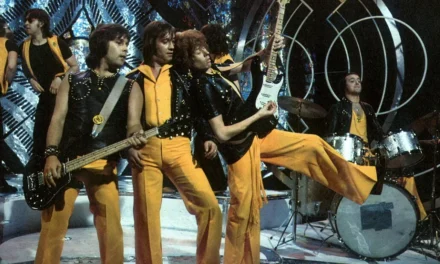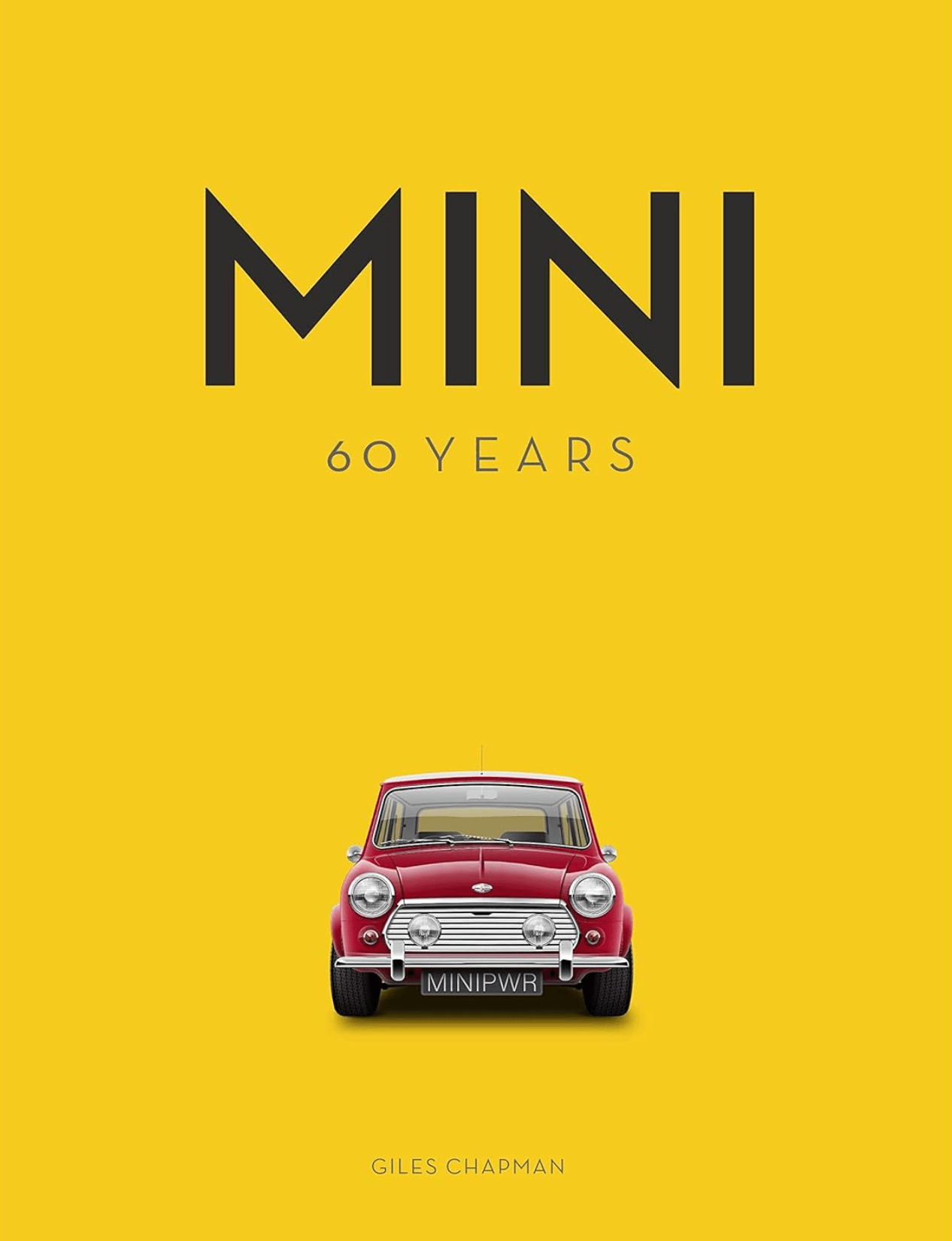The landmark events of 1963 reflected Britain as a nation filled with contrasts and conflicts – whether the generation gap rocked by fashion renegades and emerging music idols, political scandals laying bare hypocrisy in high office, or the struggle to relinquish imperial power overseas while embracing Europe as a new partner. Yet for all the upheaval and change, pride and hope remained through enduring sporting traditions and the irresistible appeal of Britain’s thriving popular culture hitting new heights in music, film and television. With one foot still planted in old certainties but an eye cast towards fresh horizons, 1963 marked a definitive end to post-war austerity as the country transitioned into the more liberated latter half of the 1960s.
In the early hours of Thursday 8th August 1963 at rural Cheddington in Buckinghamshire, £2.6 million (£50 million today) in unmarked £5, £1 and 10-shilling notes was stolen from the Glasgow to London nightmail train in a daring and brilliantly executed operation lasting just 46 minutes. Quickly dubbed the crime of the century, it has captured the imagination of the public and the world's media for 50 years, taking its place in British folklore and giving birth to the myths of The Great Train Robbery. Ronnie Biggs, Buster Edwards and Bruce Reynolds became household names.
Culture
The Great Train Robbery: How an audacious 1963 heist shocked Britain
One of the most audacious heists in British history unfolded in the early hours of August 8th, 1963, as a 15-member gang of thieves led by Bruce Reynolds staged an elaborate train robbery netting a record £2.6 million haul. This daring raid would gain infamy as the nation’s ‘crime of the century’.
The mastermind behind it was Bruce Reynolds, a seasoned career criminal well-versed in sophisticated frauds and thefts. He assembled a group of trusted accomplices ranging from fellow seasoned crooks like the getaway driver Roy James to more peripheral hangers-on enticed by the monumental payday. The gang included Ronnie Biggs, Buster Edwards, Charlie Wilson, Douglas Goody and others armed with an assortment of guns, metal bars, and rope.
Their target was the night mail train running between Glasgow and London, which they knew would be loaded with sacks of cash on one of its regular journeys. Holding up such a moving postal train had never been attempted before in Britain. But through inside information from an informant code-named ‘The Ulsterman’, Reynolds’ gang had access to critical details around the train’s schedule and cargo that enabled them to hatch an ingeniously simple plan.
On the night of August 7th, the robbers gathered near the tiny village of Cheddington where they intended to carry out their plot around midnight. Just after 3am on August 8th, as the train passed through Buckinghamshire en route to Euston, a gloved hand appeared from the darkness alongside the tracks and gave the emergency stop signal with a torch. As per railway protocol, driver Jack Mills dutifully slowed the train to a halt, assuming a signalling failure or blockage ahead. But as Mills went to investigate this red light, the gang of robbers suddenly emerged in ski masks and dark clothes and swarmed onto the locomotive.
The driver Mills and his assistant David Whitby were quickly subdued, hit over the head with metal bars and left concussed in the initial attack. Charlie Wilson kept watch over them in the cab with his gun drawn while the others got to work on their astonishing robbery. Several gang members began uncoupling the mail carriages from the passenger carriages up ahead. Once detached, they drove the mail train a half mile further down the line to Bridego Bridge, out of sight from any prying eyes. Now safely hidden in a secluded rural area, the thieves could focus on the valuables.
Using jacks, the robbers popped open the doors of the central high-value carriage known as the HVP. This section transported the most cash between post offices. Working fast, they discovered the expected bounty within – 120 mailbags stuffed with banknotes of various denominations totalling £2.6 million. Lugging the heavy sacks out to waiting vans, the team emptied the HVP in just 15 minutes. Their timing and execution had gone precisely to plan. They phoned Ronnie Biggs waiting up the tracks to signal a clean getaway before disappearing into the night with their record-breaking score. The Gang had just pulled off Britain’s ‘crime of the century’.
In the ensuing days, their disappearance spawned an enormous manhunt across Buckinghamshire as Tommy Butler from Scotland Yard led the investigation. Police soon made a critical discovery of the gang’s hideout at Leatherslade Farm, but the occupants had already fled after burning any evidence. Various fingerprints and forensic materials slowly led authorities to identify suspects, who were rounded up over the following months.
Charlie Wilson was arrested in January 1964 and refused to talk. Buster Edwards turned himself in that September. Ronnie Biggs was tracked to Australia but initially eluded capture. Bruce Reynolds avoided British police for five years before being apprehended in 1968 along with the last co-conspirators.
Despite these arrests, much of the £2.6 million stolen was never fully recovered. Various rumours circulated around buried caches of banknotes hidden across the country. In the end, only about £400,000 was eventually traced. The great majority of the record-breaking loot disappeared into criminal folklore. While the roundup brought many gang members to justice through long prison sentences, public imagination was stirred by the scale and boldness of the train robbery amidst 1963 Britain’s shifting attitudes towards authority and anti-establishment defiance.
The thieves’ ingenious execution method leveraging inside information about mail train operations pointed to technical expertise and strategic mastery. Carrying out such an ambitious heist without violence also evoked a certain reluctant public wonder. While ultimately unsuccessful given the convictions, the Great Train Robbery highlighted evolving social perceptions around criminality, which were increasingly drawn to such audacious yet bloodless acts of resistance and rebellion. The cultural image of the suave gentleman outlaw striking an elusive blow against the establishment exerted a definite fascination on the public mind.
For the legal system and police, the saga was a major wake-up call about the risks of lax security around national mail transport. It demonstrated an emboldened criminal class now boasting the skills and networks to penetrate public infrastructure in unprecedented ways. But for many citizens, the great heist held an ambivalent intrigue as a symbolic counterpoint to a seemingly untouchable elite hierarchy.
While the rule of law ultimately prevailed, this landmark 1963 theft embodied changing social attitudes that were less deferential to institutions and authority. The Great Train Robbery marked a definitive end to Britain’s post-war era of conformity. A turbulent new age beckoned.

Swinging London Captivates World
Beyond the Great Train Robbery notoriety, a hip cultural movement transformed London into the scintillating epicentre of cool in the early-to-mid 1960s. Branded ‘Swinging London’ by Time magazine, the city attracted eccentric young artists, designers, models and musicians blending dandy fashions with rock and roll spirit into a kaleidoscopic production.
The heart of this scene was Carnaby Street in Soho, where boutique owner Mary Quant led a fashion youth quake by abolishing dowdy hemlines for bold miniskirts, bright tights and silhouettes inaugurating the ‘mods’ aesthetic. Mop-topped rock bands like The Beatles and The Rolling Stones made flamboyant statements in their Edwardian-inspired suits, overflowing with swagger and sex appeal. Photographers like David Bailey developed new styles of fashion editorial photography as he snapped Waifish high society model Jean Shrimpton, who herself caused a sensation by wearing a mini dress to the very conservative Royal Ascot races. Their work merged fashion and commerce with a gritty, fine art edge.
Provocative filmmakers like Michelangelo Antonioni captured the scene’s vibrant chaos in Blowup, about a jaded photographer crossing paths with the swinging world’s decadence and drugs. Antonioni’s surreal vision presaged the psychedelic experimentation to come. Avant-garde celebrity hairstylist Vidal Sassoon pioneered sleek, geometric cuts – all lines and angles aligned with modernist, ‘futuristic’ sensibilities. Neville Brody’s typography and graphic design studio pushed visual boundaries.
Together, these trendsetters fostered a climate of playful cultural experimentation and collective hedonism that captivated global media attention. Their provocative work established London as the style capital of the world, its kaleidoscopic energy dominating fashion, music, and the arts.
Swinging London reached its zenith around 1966, prefiguring the coming ‘Summer of Love’. Its questioning of tradition aligned with broader youth counterculture movements emerging contemporaneously in America, France, and beyond. But even as psychedelia and harder drugs supplanted earlier optimism, London remained a hub of innovation. The joyful creative spirit of Swinging London endured through pioneering gay clubs, sexual liberation, activist causes, and the boundaries pushed by music, fashion, and the visual avant-garde. Popular culture was becoming a mode of disruptive expression.
This fertile chapter transformed youth identity and助 unlocked more permissive social values before darker, revolutionary currents took hold. For a glimmering moment in the mid 1960s, London led the world as the epicentre of progressive culture and lifestyle.
Swinging London was an ephemeral phase between two eras – but its cultural trailblazing precipitated even greater transformations soon to come. The Sixties spirit unleashed in those visionary years permanently reshaped Britain’s outlook.
The Group follows eight graduates from exclusive Vassar College as they find love and heartbreak, and choose careers and husbands against the backdrop of 1930s New York.
Mary McCarthy (1912-1989) was born in Seattle, Washington. She was a short-story writer, bestselling novelist, essayist and a social and art critic. She was a member of the National Institute of Arts and Letters and won the National Medal for Literature and the Edward MacDowell Medal in 1984.
Groundbreaking Novels Challenge Taboos
1963 marked a milestone in literature as once taboo topics around gender and sexuality took centre stage. Mary McCarthy’s The Group and Elaine Dundy’s The Girls told stories focused on intimate relationships between women, exploring themes of sexual liberation.
McCarthy’s work followed eight Radcliffe graduates’ lives and romantic entanglements in 1930s New York. One leaves her husband to explore a lesbian affair. Dundy’s novel depicted the intimate bonds and rivalries amongst members of a girl band in postwar London, including a covert romance between the singer and drummer.
These groundbreaking books faced censorship battles, with publishers fighting to ban them as obscene. But critics praised the works for their unprecedented openness in depicting lesbian experiences with nuance and empathy. The frank but thoughtful representation of homosexuality was trailblazing for its time. While provocative, these literary works highlighted society’s evolving attitudes now questioning traditional assumptions around identity, relationships and censorship.
Their narratives marked literature’s capability to engage the public on empathy, equality and inclusivity across lines of orientation, class and background. This new permissiveness and moral questioning in fiction publishing reflected Britain’s growing social tolerance as the Sixties unfolded. Beyond just entertainment, The Group and The Girls carried an activist agenda – to challenge prejudices, foster acceptance of marginalised groups, and reveal the full spectrum of human relationships.
While legal acceptance was still far off, these books won critical claim and readership. Their pioneering subject matter opened the door for more nuanced LGBTQ+ representation in the arts and culture. Both works endured bans before ultimately reaching bestseller status for their intimate first-hand look at topics long brushed under the rug. Their groundbreaking themes spotlighted literature’s power as a vehicle for new perspectives on diversity and identity.
These thought-provoking novels marked a historic shift in the literary landscape. Their taboo-breaking yet humanistic narratives exemplified how storytelling could promote progressive social change around gender and sexuality in 1960s Britain and beyond.

Music
The Beatles Ignite Beatlemania
February 1963 saw The Beatles skyrocket from Liverpool fame to national stardom as their infectiously catchy rock/pop single “Please Please Me” hit #1 on the UK charts for 7 weeks, sparking full-blown Beatlemania.
Their debut LP Please Please Me soon followed, capturing the exuberant Merseybeat sound. It stayed at #1 for 30 weeks – a record. By year’s end, Beatles fever was well and truly underway as their follow-up album With the Beatles also hit #1 and stayed for 21 weeks. The Beatles’ music stood out from earlier polite pop with its rawer rock and roll energy. Their soaring melodies and euphoric harmonies perfectly captured the youthful spirit of the times.
Even as their mop-top haircuts and slim dark suits inspired new fashion trends, the Beatles won over listeners of all ages with joyous love songs like “She Loves You” and “I Want to Hold Your Hand”. Seeing crowds of screaming teenagers at their shows and mobbing them in public, the media dubbed this newfound hysteria as “Beatlemania”. The Beatles had sparked a pop culture phenomenon.
Their meteoric success signalled a seismic shift in Britain’s musical landscape. The fresh song craft of these four lads from Liverpool captivated the country and pointed towards the future. Their music made room for both high-energy rock and sentimental ballads, expanding pop’s parameters. But beyond just their sound, the Beatles’ cheeky personalities and witty banter endeared them as a loveable mop-top unit with an irreverent charm. They felt like approachable sons or brothers, rather than untouchable stars.
Between their talent and likability, the Beatles provided a joyous tonic to Britain in a landmark transitional year. As the country moved from post-war austerity towards new horizons, this breakthrough band leading the “British invasion” gave young audiences an infectious upbeat soundtrack for the unfolding sixties. Their albums were a celebration.
While Beatlemania was uncontainable, the Beatles stayed grounded in bedrock melodies and lyrical craftsmanship. This combination of sophistication and frenzy made them global icons who pointed the way forward for pop music.
Featuring fresh insights from Mick, Keith, Charlie and Ronnie, Unzipped digs deeper than ever before into the Stones’ archives to present a comprehensive collection of Stones artworks, instruments, stage outfits and notebooks alongside key work by some of the legends of rock photography.
For almost 60 years the Rolling Stones have helped shape popular culture around the globe. Unzipped captures the compelling character and dynamic spectacle of the band through distinctive photography and interviews with the Stones themselves, tracing their impact and influence on rock music, art, design, fashion, photography and filmmaking.
Stones Gain Notoriety, Pirates Rule Airwaves
Fellow Liverpool group Gerry and the Pacemakers enjoyed breakout success in 1963 behind happy-go-lucky hits like “How Do You Do It?” and “I Like It.”
But their upbeat Merseybeat sound met an edgier counterpoint as hometown rivals The Rolling Stones gained notoriety as London’s bad boy blues rockers. Their defiant tracks like “Come On” and “I Wanna Be Your Man” cultivated a grittier, rebellious image compared to the Beatles. While the Beatles’ suits were dapper and polite, the Stones dressed in scruffier street clothes and exuded sexuality and danger. Mick Jagger’s provocative stage moves sparked controversy, cementing the group’s outlaw personality.
This bold persona connected with young audiences hungry for more rebellion in their rock, beyond the Beatles’ sweeter pop. The band’s Chicago blues influences birthed a harder, more transgressive sound. They sang of lust and frustration rather than wide-eyed love. The Stones’ rise also benefited from Pirate Radio stations like Radio Caroline and Radio London illegally broadcasting rock music from ships at sea. Unencumbered by the BBC’s conservative policies, these pirate stations gained huge youth followings by playing the latest rock, R&B and pop hits non-stop.
Stations like Radio London and Radio Caroline essentially served as 24 hour pop music networks for a generation starved for contemporary sounds. Groups like the Stones rode this wave to stardom. While unauthorised, these pirate broadcasts aligned with the anti-establishment times. Their popularity forced the BBC to reconsider its stuffy programming.
Between the boundary-pushing bands and pirate stations, 1963 marked a fast-evolving musical landscape. The myriad voices heralded a golden age of British rock with new sounds and provocative attitudes tailor-made for the invigorating sixties. A revolution was underway.
In the summer of 1980, ten years after the break-up of the Beatles, John Lennon signed with a new label, ready to record new music for the first time in years. Everyone was awestruck when Lennon dashed off '(Just Like) Starting Over'. Lennon was back in peak form, with his best songwriting since 'Imagine'.
Enriched by exclusive interviews with Lennon's friends and associates, including Paul McCartney, The Last Days of John Lennon is a true-crime drama about two men who changed history. One whose indelible songs enliven our world to this day, and the other who ended the music with five pulls of a trigger.
1963 Inaugural Brit Awards Spotlights UK Talent
October 1963 saw the inaugural Brit Awards ceremony hosted at London’s prestigious Royal Albert Hall to honor Britain’s biggest recording artists over the past year. Initially titled the BPI Awards after the British Phonographic Industry, this first edition aimed to formally recognise both contemporary pop and more traditional British acts.
Teen idol Cliff Richard took the top prizes for both his album Summer Holiday and outstanding contribution to music, signalling the pop chart dominance he shared that year with the Beatles. Other early winners included upstarts like The Beatles taking the award for Best British Group. But the ceremony also celebrated stalwart crooners like Harry Secombe and Shirley Bassey alongside the new acts.
The BBC televised the ceremony in prime time, offering a formal venue for ascendant beat and rock talents to receive acclaim alongside old guard singers. This bridging of generations reflected the changing times. Sharing the stage at this landmark industry event highlighted the rapid creative upheaval – out with the old and in with the new. But it also demonstrated continuity, with both established and rising stars lauded.
The inclusive atmosphere mirrored Britain’s ability to straddle tradition and evolution. As the ceremony gained prominence in later years, this inaugural 1963 edition marked the beginning of an iconic awards platform.
It captured a visionary music scene bursting at the seams, with young rockers and crooners all jostling for their place in the spotlight. The Brit Awards would only grow in stature from these promising beginnings.

Entertainment
Doctor Who Launches 55 Year Sci-Fi Dynasty
The BBC made television history in 1963 by launching its pioneering science fiction series Doctor Who on November 23rd. The show introduced viewers to its central character known only as ‘The Doctor’ – a quirky time-travelling alien adventurer who transported his human companions through space and time in a blue Police Box that was bigger on the inside.
This police box vessel known as the TARDIS became the show’s most iconic visual symbol. Its fantastical dimensions underscored the limitless possibilities of Doctor Who’s imagination. Actor William Hartnell magnificently portrayed this eccentric mysterious figure from planet Gallifrey during the show’s first critical years. His wise but mischievous grandfatherly presence endeared the alien Doctor to audiences.
The show’s outlandish plots saw the Doctor travel to fantastical worlds filled with strange creatures and cosmic threats, including iconic recurring adversaries like the Daleks and Cybermen who became embedded in British pop culture. With its surreal adventures, scary B-movie style monsters and eccentric anti-hero protagonist, Doctor Who tapped deeply into children’s imaginations with its escapist appeal. But its underlying message championing courage, compassion and curiosity with whimsical wit also resonated across generations.
The show became a shared family viewing experience that encapsulated a spirit of both wonder and fear. Its playful spirit encouraged creative thinking and problem solving in young viewers.
Now 58 years since its first airing, Doctor Who remains essential British television boasting millions of passionate fans around the world. Its enduring success pays testament to the ominous, uncanny allure of its early iconic episodes first unleashed on UK audiences in that landmark inaugural 1963 season.
That original run laid the foundation for decades of timeless storytelling that would earn Doctor Who the Guinness World Record for the longest running sci-fi series. Its cutting-edge special effects and compelling emotional storytelling make it a treasured TV institution.
With 16 hardback books each containing a fairy tale set in the world of Doctor Who, this slipcase edition of Time Lord Fairy Tales includes a brand new story for 2016: The Emperor Dalek's New Clothes.
Time Lord Fairy Tales contains legendary stories of monsters, mysteries, villains and heroes from across the Whoniverse. A beautifully illustrated collection of dark and dangerous Whovian fairy tales, this slipcase is the perfect gift for any true Doctor Who fan.
Carry On Films Deliver Escapist Comedy
At British cinema box offices, the beloved Carry On series starring household names like Kenneth Williams, Sid James, Joan Sims, Barbara Windsor and Hattie Jacques continued delivering escapist laughs in 1963.
That year’s Carry on Cabby amassed huge domestic profits as the sixth Carry On film. These frantic farces were set in familiar English environments like hospitals, villages or historical eras. Their madcap stories pastiched British culture with slapstick humour, raunchy innuendo and satirical wit. Plots typically followed a chaotic ensemble cast through some institutional or official setting that descends into mayhem. Carry On films satirised the codes of conduct in ‘proper’ British society, parodying pomposity and repression.
While critics panned the series as lowbrow, Carry On films won over audiences seeking unpretentious entertainment amidst the emergence of more revolutionary New Wave cinema. Stars like Barbara Windsor and Joan Sims achieved national treasure status from their Carry On roles. Regarded as a celebration of British eccentricity and working-class humour, the series eventually spanned 31 films until 1978.
Carry On cemented its place as a cozy staple of British comedy, evoking nostalgia for old-fashioned institutions and traditional English reserve. As society evolved sharply, the Carry Ons’ enduring popularity reflected a sentimental yearning at the box office for reassuring references to a less turbulent past.
For fans, the films represented a comforting ode to traditional British culture and its idiosyncratic characters. While cinematically modest, the Carry Ons tapped into viewers’ fondness for the familiar, conjuring respectable settings descending into organised chaos. The mediated reality and broad stereotypes served as a form of escapism from more unsettled times. As British life transformed dramatically, this long-running series provided cheerful glimpses back into fictional yesteryears that felt knowable and safe.

Politics
1963 Profumo Scandal Shakes Westminster
Britain’s frenzied Profumo Affair political scandal rocked public faith in the established order after Secretary of State for War John Profumo confessed in June 1963 to an extramarital affair with 19-year old model Christine Keeler.
After repeated denials, Profumo admitted misleading Parliament about their relationship – a deception many feared risked national security amidst Cold War tensions, as Keeler was also involved with a suspected Soviet attaché. The revelations of adultery, espionage suspicions, and perjury utterly destroyed Profumo’s career and brought ignominy to Harold Macmillan’s ageing Conservative government. Their disastrous handling of the scandal exposed systemic hypocrisy and loose morals buried behind elite British society’s upstanding outward appearances.
While Macmillan survived a parliamentary no confidence vote in the scandal’s wake, his and the Tories’ reputations lay in tatters. The establishment seemed more concerned with hiding its dirty laundry than coming clean. This sordid episode fuelled greater public mistrust towards institutions and officialdom. Coming the same year as other sex and corruption scandals, the Profumo Affair suggested a rotten core at the heart of British high society and government.
The fact that a Minister of War could carry on such an affair with a woman linked to Soviet intelligence raised dire questions around negligence and morality. With Cold War tensions high, the implications for national security were severe. The widespread fallout signalled a collapse in deference towards hierarchy and power.
By laying bare systemic hypocrisy festering behind upstanding facades, the Profumo Affair marked a pivotal moment eroding public faith in established authorities. Their bungled response to scandal only worsened perceptions of an out-of-touch elite.
For many citizens, the events confirmed a need for greater government accountability and transparency. The roiling controversy hardened attitudes against the old order as a more defiant, progressive age beckoned.
WINNER OF THE POLITICAL BOOK AWARDS POLITICAL HISTORY BOOK OF THE YEAR 2014.
Published to coincide with the fiftieth anniversary of the Profumo scandal, An English Affair is a sharp-focused snapshot of a nation on the brink of social revolution.
Britain in 1963 Harold Macmillan was the Prime Minister of a Conservative government, dedicated to tradition, hierarchy and, above all, old-fashioned morality. But a breakdown of social boundaries saw nightclub hostesses mixing with aristocrats, and middle-class professionals dabbling in criminality. Meanwhile, Cold War paranoia gripped the public imagination.
Aden Crisis Highlights Fall of Empire
In 1963, the Aden Crisis in the Middle East highlighted Britain’s waning imperial power as the Empire struggled to maintain control over one of its last remaining colonies in the region.
Aden, located in present-day Yemen, had served as the administrative centre for Britain’s colonies in the Middle East since the 1930s. Its strategic port enabled Britain to project military force and protect interests across the Arabian peninsula and Indian Ocean.
But rising Arab nationalist sentiment challenged British dominance throughout the 1950s and early 1960s, sparking decolonisation movements. In 1963, tensions erupted as militant groups like the National Liberation Front (NLF) and the Front for the Liberation of Occupied South Yemen (FLOSY) launched violent attacks and bombings against British troops and officials in Aden. Their goal was to destabilise the region and force the Empire’s withdrawal.
The UK refused to relinquish Aden, responding aggressively with counterinsurgency operations. But the NLF and FLOSY were willing to embrace extreme violence to achieve independence. Shootings, riots, and executions spilled blood on both sides. Britain’s forceful crackdowns only hardened local resistance. The strength of indigenous militias took Britain by surprise – a miscalculation indicating its colonial hubris. With Cold War tensions escalating, the USSR backed liberation fronts with aid and arms.
The vicious conflict highlighted Britain’s loosening grip as its military struggled to contain guerrilla attacks and civil disorder. Global sympathies largely sided with Arab nationalists despite British propaganda. The UN condemned the brutal measures and rights violations under British emergency rule.
The Aden Emergency, as it became known, dragged on for years before an exhausted Britain finally granted independence in 1967. But the clashes and instability of 1963 exposed the fading Imperial reach in the face of determined indigenous resistance.
Aden represented the death throes of the British Empire. Its painful dissolution was seen from Suez to Cyprus to East Africa. But the Aden Crisis marked a symbolic turning point – the empire was no longer able to dictate terms. This bitter colonial conflict presaged Britain’s more isolationist role ahead. The age of hegemony had passed.
During the early 1960s the Cold War reached its climax. Britain's dwindling power in the Middle East was under siege from Arab nationalism, the Communist bloc and from American designs in the region. Aden, with its strategic military base and old Protectorate buffer zone, was soon the main battleground. The 1962 Egyptian-inspired coup in the neighbouring Kingdom of North Yemen further tightened the noose. So began a bitter and bloody insurgency war in South Arabia. British regular an special forces were soon pitted against growing and formidable insurgency forces, fighting both a war in the mountains and an urban conflict in the backstreets of Aden.
Britain Seeks New Continental Alliances
Domestically, Prime Minister Harold Macmillan signalled Britain’s pragmatic shift toward stronger European ties in 1963.
With the British Empire declining, Macmillan sought new partnerships. In May, he expanded the European Free Trade Association (EFTA) by joining the seven-member trading bloc as an alternative to the European Economic Community (EEC) customs union. The EFTA allowed tariff-free exchange between members without requiring the same level of economic integration and shared regulation demanded by the EEC.
Macmillan’s continental overture acknowledged that geopolitical realignment was prudent amidst the sunsetting of Empire. Fostering European cooperation on finance and trade aligned with Britain’s emerging post-imperial interests. There remained vocal opposition. Some Conservative and Labour politicians urged maintaining preferential Commonwealth economic links instead. But Macmillan pushed ahead, emphasising commercial pragmatism over sentimentality.
Joining the EFTA did not preclude EEC membership down the line. But in the interim it granted Britain a voice in European affairs. Macmillan knew that Britain’s future depended on strengthening continental relationships as decolonisation accelerated. This calculated pivot towards Europe demonstrated Macmillan’s awareness that Britain could not solve economic challenges alone. Seeking European partnerships afforded new stability amidst global changes.
While slow to relinquish imperial greatness, Macmillan’s leadership accepted that realignment was essential as colonies gained independence. This move pointed towards Britain’s more internationalist outlook ahead.
The EFTA marked a transitional step. But Macmillan’s choice signalled acknowledgment that Empire was fading while Europe offered renewed cooperation and growth. His continental overture aligned Britain with coming realities.

Sport
Harvey Smith Wins 1963 BBC Sports Personality Prize
In 1963, brash Yorkshireman Harvey Smith claimed the BBC’s prestigious Sports Personality of the Year prize after a breakout season cementing his domination of British showjumping at just 25 years of age.
The fiery competitor beat Formula One world champion Jim Clark and Wimbledon winner Chuck McKinley in the BBC public vote. Smith first grabbed national attention that year by becoming British national champion in showjumping – a remarkable feat for one so young. His aggressive riding style and cocky personality also brought notoriety.
During a major event at Hickstead, he made a vulgar two-fingered gesture towards judges after incurring time penalties. Smith remained unrepentant, feeding his bad boy image. But controversy only enhanced the appeal of this working-class prodigy in showjumping, a sport long dominated by the societal elite.
Smith’s brash confidence and exceptional skill resonated with the public. Alongside his historic national title, he racked up wins abroad while regularly breaking course records. By season’s end, still just a teenager in his sport, Smith was Britain’s undisputed top rider. His landmark BBC Sports Personality award reflected not just competitive achievements but popular adulation.
The fiery Yorkshireman became a cult icon, representing a bold young generation. For many, Smith’s rise heralded meritocracy conquering hierarchy through pure talent and guts. His unprecedented youthful dominance of a genteel sport underscored how Britain’s sporting landscape was being reshaped in the 1960s by working-class prodigies with attitude.
To the young people of today, the 1960s seems like another age. But for those who grew up in this decade, school life, 'mod' fashions and sixties pop music are still fresh in their minds. From James Bond to Sindy dolls and playing hopscotch in the street, life was very different to how it is now. After the tough and frugal years of the fifties, the sixties was a boom period, a time of changed attitudes and improved lifestyles.
United States Defeat Britain in Ryder Cup
In golf, the legendary Ryder Cup tournament saw reigning champion American golfers compete on British soil for the first time in the competition’s history.
The prestigious biennial match pitting the USA against Great Britain and Ireland took place in October 1963 at Wentworth Club outside London. Boasting legendary players like Arnold Palmer and Julius Boros, the visiting American team faced spirited home challenges on an unfamiliar British course before narrowly retaining the cup by a score of 11 to 9 1⁄2 points.
The Yanks had held the cup since 1957 against British challengers. But as television expanded golf’s popularity, the 1963 Ryder Cup gained elevated international prestige with its inaugural hosting in Britain. Though disappointed to lose before home crowds, British captain Arthur Lacey took pride in his team’s strong play on home turf against the world’s top golfers.
The narrow margin highlighted the rising pedigree of British stars like Bernard Hunt and Neil Coles. Enthusiastic galleries also showed golf’s growing appeal across class lines. With transatlantic teams competing on English courses for the first time, the rousing matches marked a coming of age for British golf in the global arena.
Though falling just short, rallying to nearly wrest the cup signalled that Britain could compete with the Americans on a world stage. The thrilling duels heralded Britain’s emergence as a future power player. The 1963 Ryder Cup marked a turning point – even in defeat, passionate home crowds and top-flight British play affirmed that UK golf was closing the gap with the world’s elite.

The year 1963 proved a pivotal transitional period for the United Kingdom as the country straddled both its tradition-laden past and an era of dramatic societal changes surging underway. The Profumo scandal, Great Train Robbery, rise of Beatlemania and other happenings signaled the dawn of more disruptive, progressive times ahead.
From the British Empire’s weakening grip amidst decolonization struggles like the Aden crisis, to explosive betrayals of public trust in the establishment with controversies like the Profumo affair, 1963 marked a turning point. As youth culture flourished, heralded by Beat groups and fashion revolutionaries like Mary Quant, a wide generation gap emerged.
The country’s stiff upper lip loosened, giving way to more permissiveness and skepticism of authority. Boundary-pushing art and comedy reflected this spirit. Landmark events like Doctor Who’s debut, the emergence of controversial novels and TV shows, the Profumo revelations and more encapsulated a nation in flux.
The United Kingdom stood balanced between its proud but fading imperial heyday and an uncertain but invigorating future. The monumental changes underway in 1963 presaged the full-blown social revolutionizing of Britain in the swinging Sixties soon to come. But this year proved a vital early milestone in the nation’s transformation.























